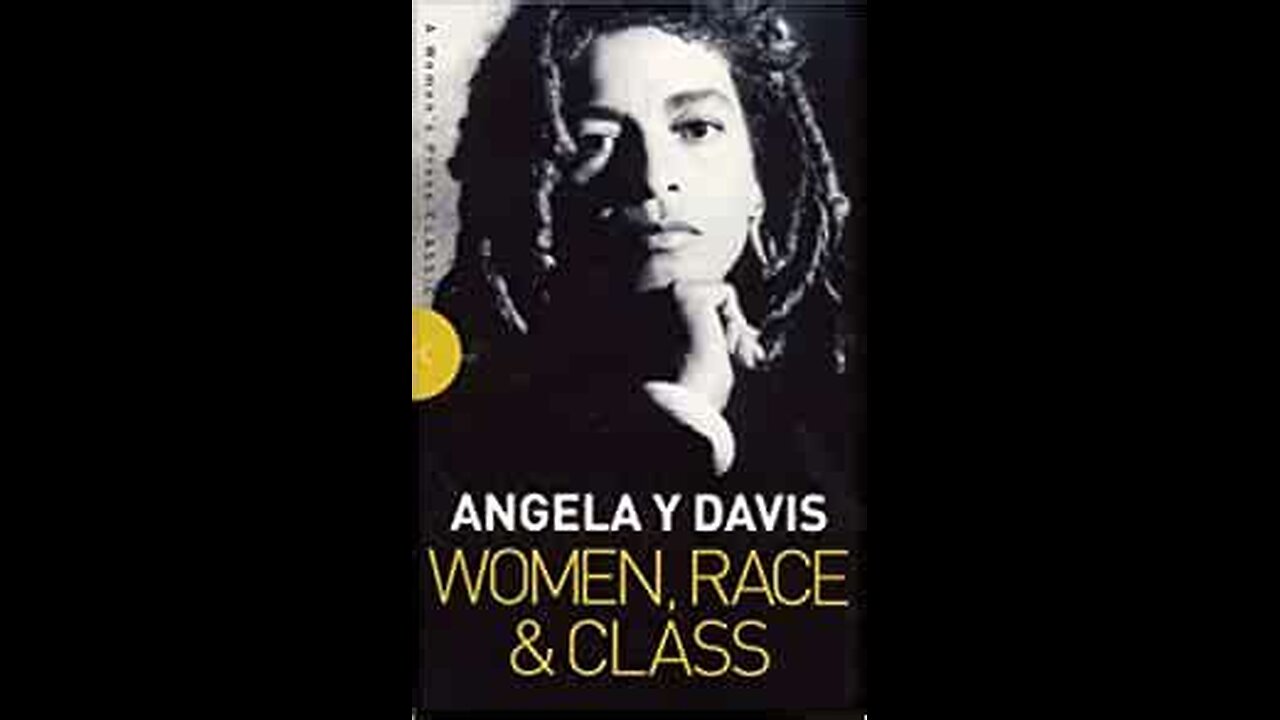Premium Only Content

Women, Race, and Class by Angela Davis | Summary and Critique
Buy Here: https://amzn.to/3BZTiWK
"""Women, Race, and Class"" is a book written by Angela Davis and published in 1981. In this influential work, Davis examines the intersections of gender, race, and class and explores the ways in which systems of oppression operate and interact.
The book begins with a historical analysis of the formation of the modern women's movement and its connections to the abolitionist movement and the struggle for racial equality. Davis highlights the contributions of women of color and working-class women to these movements, challenging the dominant narrative that often overlooks their role.
Davis then delves into the specific experiences of women of different racial and class backgrounds. She explores how the exploitation and subjugation of women are influenced by intersecting systems of oppression, such as capitalism, racism, and sexism. She examines how gender, race, and class intersect to shape women's experiences and opportunities in society.
Furthermore, Davis critically analyzes the ways in which women's struggles have been divided along racial and class lines. She examines the tensions and conflicts within feminist movements, particularly regarding issues of representation, solidarity, and the inclusion of marginalized voices.
In ""Women, Race, and Class,"" Davis also emphasizes the importance of solidarity among women and the need to challenge and dismantle systems of oppression collectively. She calls for an intersectional feminism that recognizes the interconnectedness of gender, race, and class and works towards liberation for all women.
Critics have praised ""Women, Race, and Class"" for its groundbreaking analysis and its contributions to feminist theory and activism. Davis's work has been influential in highlighting the intersections of oppression and the importance of addressing issues of race and class within feminist movements.
However, some critics have argued that Davis's Marxist framework may overlook the complexities of individual agency and choice. They suggest that her analysis tends to view women primarily as victims of oppressive structures, potentially neglecting the agency and resistance exercised by women in various contexts.
Additionally, some critics contend that Davis's work could benefit from a more comprehensive analysis of other forms of oppression, such as homophobia, ableism, and transphobia, in order to provide a more inclusive understanding of women's experiences.
In summary, ""Women, Race, and Class"" by Angela Davis is a significant work that examines the intersections of gender, race, and class. Davis explores the historical contributions of women of color and working-class women to social justice movements, analyzes the ways in which systems of oppression intersect, and advocates for intersectional feminism and collective liberation. While the book has been praised for its insightful analysis, critics have raised concerns about potential limitations in the analysis of individual agency and the inclusion of other forms of oppression."
-
 LIVE
LIVE
SpartakusLIVE
6 hours agoSPECIALIST Easter Egg ALL DAY || Duos w/ StevieT
358 watching -
 1:14:47
1:14:47
FreshandFit
4 hours agoTop 5 Business Credit Cards
28.7K4 -
 LIVE
LIVE
iCheapshot
3 hours ago $0.02 earnedPart 2 of a12cat34dog's Ben and Ed No Rage Quit Challenge!
258 watching -
 1:49:53
1:49:53
Glenn Greenwald
7 hours agoDOGE: Promises vs. Reality; Ukraine's Drone Attacks on Russian Air Bases; Gaza Ceasefire Deal Developments | SYSTEM UPDATE #463
98.2K55 -
 2:13:34
2:13:34
RiftTV/Slightly Offensive
6 hours agoZelensky Declares WAR on RUSSIA.. Trump FUMING Over Surprise ATTACK | The Rift | Guest: Sarah Stock
43.1K78 -

a12cat34dog
4 hours ago2011 GAME PREDICTS 2027 :: Homefront :: AMERICA HAS FALLEN {18+}
10.4K1 -
 2:37:10
2:37:10
PudgeTV
8 hours agoMod Mondays Special Ep | Gaming on Rumble Ambassadors | The Rumble Takeover
51.8K5 -
 1:52:43
1:52:43
Dome After Dark
4 hours agoDome After Dark: Monday Night Hangout!
7.79K -
 LIVE
LIVE
RyuMuramasa✧
5 hours agoLimveld's Destiny | Elden Ring Nightreign | LIVE Full Walkthrough!
30 watching -
 1:52:45
1:52:45
Robert Gouveia
6 hours agoTrump at SUPREME COURT! Election Lawsuit ACCEPTED! Gun Rights IGNORED!
49.6K11